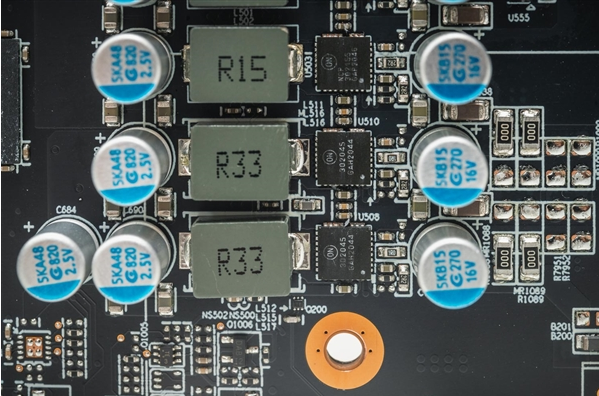In general, the PCB stack-up design must follow two rules:
1. Each wiring layer must have an adjacent reference layer (power or ground layer);
2. The adjacent main power plane and ground plane should be kept at a minimum distance to provide larger coupling capacitance.
The following lists the stack from two-layer board to eight-layer board for example explanation:
1. Stacking of single-sided PCB board and double-sided PCB board
For two-layer boards, due to the small number of layers, there is no longer a problem of lamination. The control of EMI radiation is mainly considered from the wiring and layout;
The electromagnetic compatibility problems of PCB single-layer boards and double-layer boards are becoming more and more prominent. The main reason for this phenomenon is that the signal loop area is too large, which not only produces strong electromagnetic radiation, but also makes the circuit sensitive to external interference. To improve the electromagnetic compatibility of the circuit, the easiest way is to reduce the loop area of the key signal.
Key signal: From the perspective of electromagnetic compatibility, key signals mainly refer to signals that produce strong radiation and signals that are sensitive to the outside world. The signal that can generate strong radiation is generally a periodic signal, such as the low-order signal of a clock or an address. Signals that are sensitive to interference are analog signals with lower levels.

Single and double-layer boards are usually used in low-frequency analog designs below 10KHz
1) The power traces on the same layer are routed radially, and the total length of the lines is minimized;
2) When running the power and ground wires, they should be close to each other; place a ground wire on the side of the key signal wire, and this ground wire should be as close as possible to the signal wire. In this way, a smaller loop area is formed and the sensitivity of differential mode radiation to external interference is reduced. When a ground wire is added next to the signal wire, a loop with the smallest area is formed, and the signal current will definitely take this loop instead of other ground wires.
3) If it is a double-layer circuit board, you can lay a ground wire along the signal wire on the other side of the circuit board, immediately below the signal wire, and the first wire should be as wide as possible. The loop area formed in this way is equal to the thickness of the circuit board multiplied by the length of the signal line.
Two and four-layer laminates
1. SIG-GND(PWR)-PWR (GND)-SIG;
2. GND-SIG(PWR)-SIG(PWR)-GND;
For the above two laminated designs, the potential problem is for the traditional 1.6mm (62mil) board thickness. The layer spacing will become very large, which is not only unfavorable for controlling impedance, interlayer coupling and shielding; in particular, the large spacing between power ground planes reduces the board capacitance and is not conducive to filtering noise.
For the first scheme, it is usually applied to the situation where there are more chips on the board. This scheme can get better SI performance, which is not very good for EMI performance. It is mainly controlled by wiring and other details. Main attention: The ground layer is placed on the connecting layer of the signal layer with the densest signal, which is beneficial to absorb and suppress radiation; increase the area of the board to reflect the 20H rule.
For the second solution, it is usually used where the chip density on the board is low enough and there is enough area around the chip (place the required power copper layer). In this scheme, the outer layer of the PCB is ground layer, and the middle two layers are signal/power layers. The power supply on the signal layer is routed with a wide line, which can make the path impedance of the power supply current low, and the impedance of the signal microstrip path is also low, and the signal radiation of the inner layer can also be shielded by the outer layer. From the perspective of EMI control, this is the best 4-layer PCB structure available.
Main attention: The distance between the middle two layers of signal and power mixing layers should be widened, and the wiring direction should be vertical to avoid crosstalk; the board area should be appropriately controlled to reflect the 20H rule; if the wiring impedance is to be controlled, the above solution should be very careful to route the wires Arranged under the copper island for power supply and grounding. In addition, the copper on the power supply or ground layer should be interconnected as much as possible to ensure DC and low-frequency connectivity.
Three, six-layer laminate
For the design with higher chip density and higher clock frequency, the design of PCB 6-layer board should be considered, and the stacking method is recommended:
1. SIG-GND-SIG-PWR-GND-SIG;
For this solution, this PCB stacking solution can get better signal integrity, the signal layer is adjacent to the ground layer, the power layer and the ground layer are paired, the impedance of each wiring layer can be better controlled, and the two All formations can absorb magnetic field lines well. And when the power supply and ground layer are intact, it can provide a better return path for each signal layer.